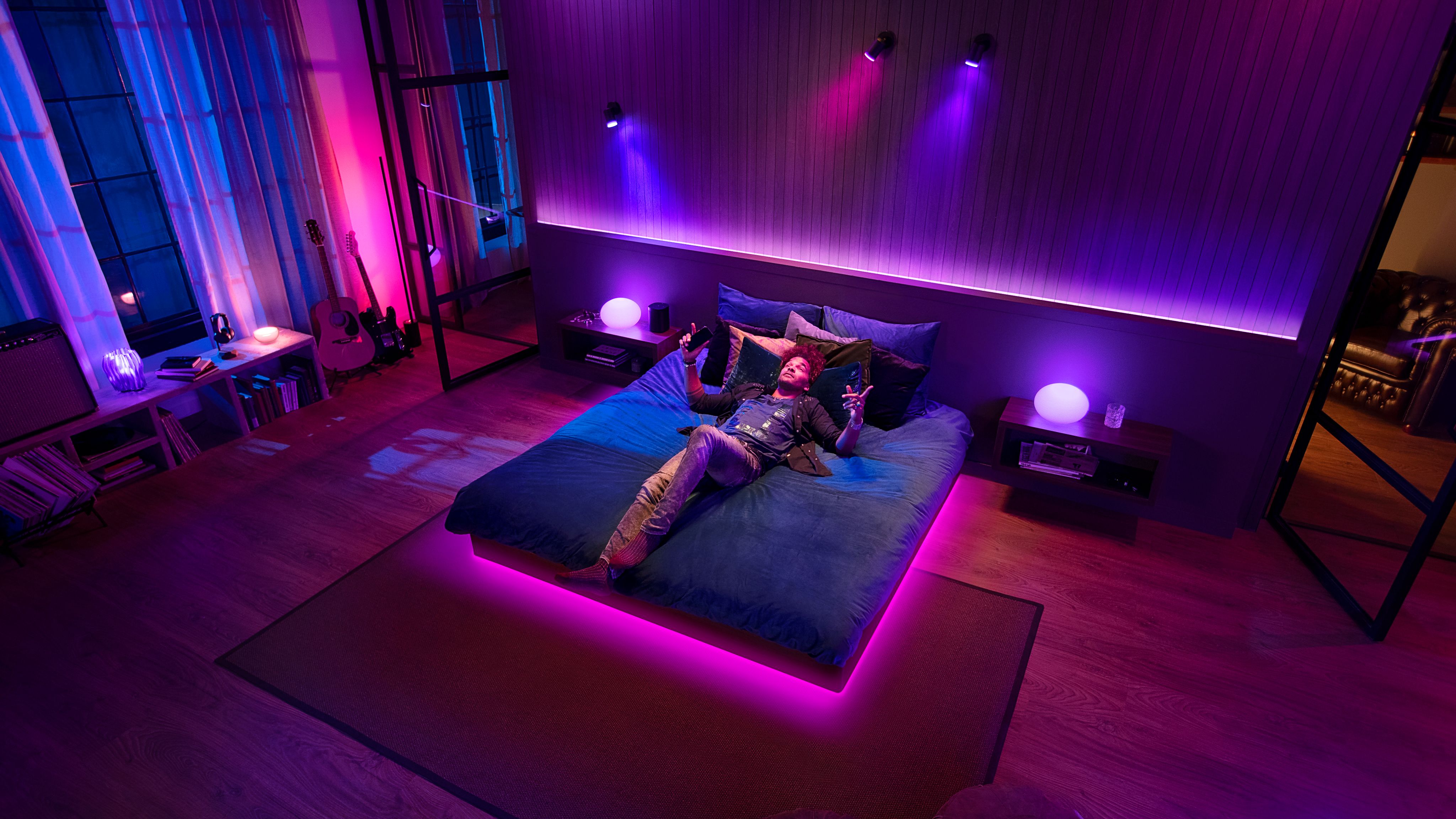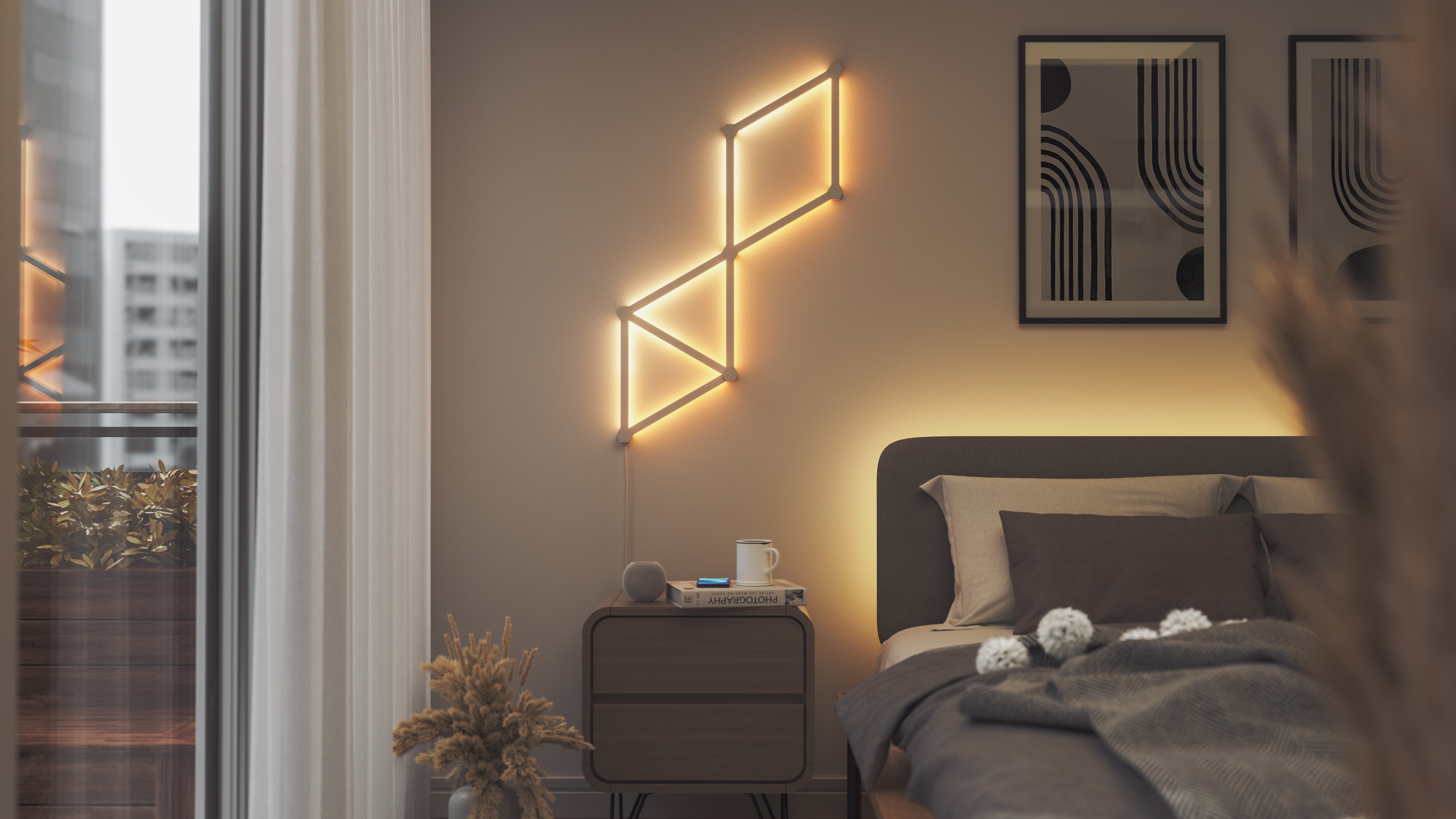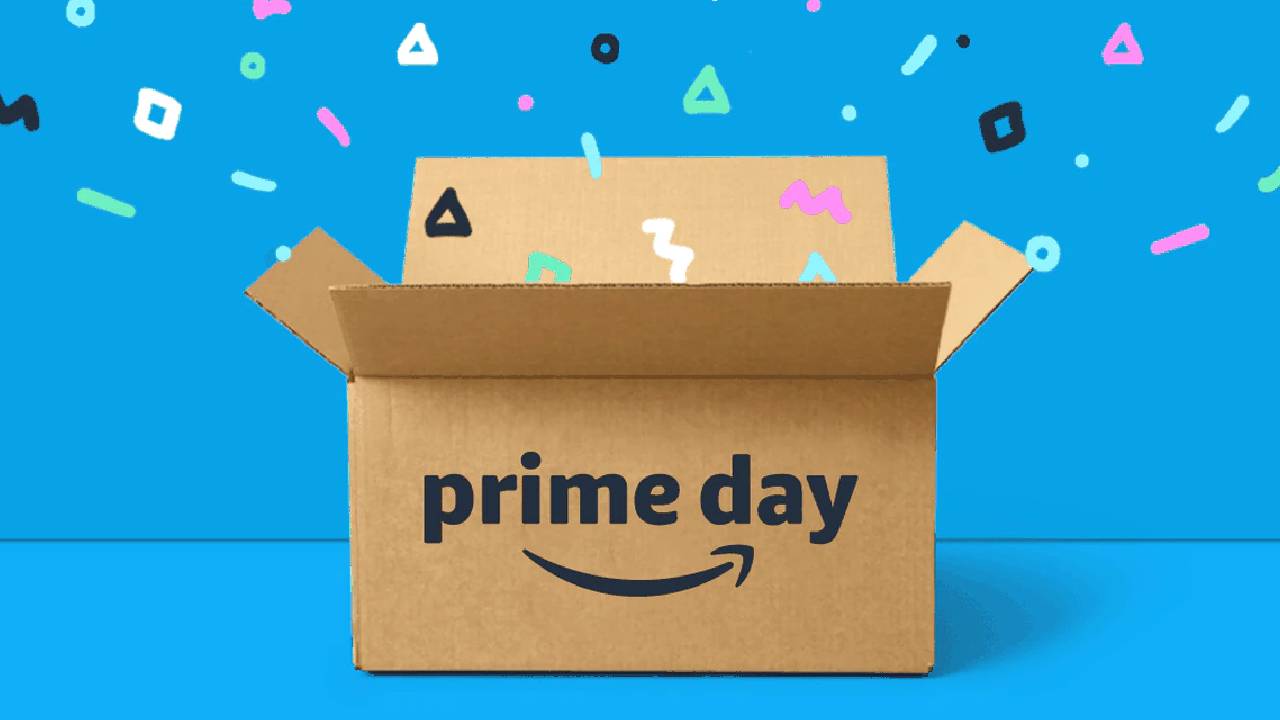Smart lights should be your next purchase – here's how to save money on them
Because with smart lights, cheap can mean cheaply made

I think it’s fair to say that smart lights have made things a lot simpler for me, changing my day-to-day life for the better.
If I wanted to retire to the bedroom for the evening, I no longer have to physically turn off the lights that I don’t need and turn on the ones that I do. One voice command to Alexa, and it’s all done in a matter of seconds. If I woke up in the middle of the night starving because I’m in the middle of my umpteenth attempt at intermittent fasting, my smart lights keep me from acquiring bruises stumbling down my narrow hallway.
Heck, if I needed a light turned on quickly because I’ve just finished watching a scary movie, and I’m now too terrified to get up and feel for the light switch, I just have to ask – in a panicky manner, naturally – for Alexa to do it for me. Not tonight, Satan.
Honestly, I’m so reliant on the best smart lights that I don’t even know if I still remember where my light switches are, let alone how to operate them. (Remind me: do you pull some sort of large, mechanical metal lever to turn them on?)
That reliance isn’t a bad thing. In fact, it’s very good thing. Smart lights, much like most smart home devices, have taken menial everyday tasks off my plate, giving me more time to dedicate to bigger, more important things. And, that’s true for most folks who have jumped on the smart home bandwagon as well.
Kevin McAllister would’ve killed – or at least just knocked someone out with a swinging sack of flour – for this tech.
Imagine doing fewer party preparations because your smart lights can single-handedly set the ambience and no longer struggling to turn on the lights when you’ve just come home with bags of groceries and kids in tow.
Imagine being able to simply set your lights to turn on and off in different rooms at random intervals when you’re away for the weekend to discourage burglars. Are you kidding me?
Sign up for breaking news, reviews, opinion, top tech deals, and more.
Kevin McAllister would’ve killed – or at least just knocked someone out with a swinging sack of flour – for this tech.
But, I digress. The point is that smart lights will make your life a lot easier, as it did mine, and it’s high time you invest.
Fair warning, though: smart lights, in general and at the moment, are still a costly investment. If you’ve only ever spent $30 on a pack of 16 regular light bulbs your whole life, that $90 price tag for a two-pack color ambience Hue light bulb might be a bit of a shock to your wallet. Meanwhile, those cheap ones from pseudo brands on Amazon might prove to be more migraine-inducers rather than life-savers.
So, how do you have your smart light-shaped cake and eat it too? At the very least, get the lights for cheaper? Is it even possible to get good quality smart lights for less? There are ways, young padawan. There are ways.
Avoid pseudo-brands on Amazon
As our very own Matt Hanson puts it, “Amazon is now a hive of scum and villainy.” Matt recently shared his experiences with attempting to save money on a microSD card and stumbling into a more-prevalent-than-you-may-think microSD card scam in which sellers are selling cards with much smaller capacities than advertised.
He’s not wrong. I, for one, have fallen victim, thanks to my ill-conceived plan to “smarten” my apartment while spending as little as possible. The reality is that there are many often-unknown Amazon sellers with no transparent company bio or support contact information available. And, they peddle smart lights (and other smart home devices, for that matter) that are inferior in quality.
I’m not just talking about sellers with brand names that just look like randomized letters with no semblance of meaning – and in caps too, just in case you’re not paying attention.
I once bought two four-pack smart light bulbs from TREATLIFE, and honestly, these are more trouble than they are worth.
They seem to be in a constant state of flicker, as if some ghosts living in my bathroom keep trying desperately to communicate with me. And, the only way to end the torture and prevent a seizure is to flick the physical switch on and off until they eventually stop flashing.
Fun fact: I actually do have a history of epilepsy, which means flashing lights such as these ghoulish bathroom bulbs could re-trigger it. It isn’t exactly ideal for my overall health.
Pouring salt on the wound, these bulbs also intermittently disconnect from the Alexa app. This doesn’t happen as often, but it’s happened to me at least five times since I first installed them.
And, I only purchased them in 2021. Every time it happens, not only do I lose the ability to control them with voice commands, but I also have to go through the process of removing them from my Groups, deleting the “old” pairings, re-adding them as new devices, renaming them, and finally, re-adding them to the appropriate Groups.
Amazon reviewers have had similar experiences with other random smart light brands like BERENNIS if you sift through the clearly-sponsored five-star fake reviews and dig deep enough.
So, rather than going cheap, you'll likely end up saving more money (and yourself a lot of frustration) by spending a little more on better-quality smart lights.
Which smart light brands are the most reliable and the best value?

There’s no sense in sugar-coating it. If you want the best of the best, listen to our smart home team and go for the Philips Hue Color Ambiance. This is, as my boy Mando would say, the way.
My Philips Hue smart light bulbs are so unproblematic they’re practically Keanu Reeves. In fact, I’ve all but forgotten about them.
They turn on and off when they’re supposed to, don’t disconnect or flicker when they feel like it, and have lots of fun functionalities that actually work (including changing to a different color when the ISS is above my neighborhood).
Plus, they are still in excellent shape despite the fact that I’ve had them much longer than my cheap smart lights.
By spending a little more, you’re actually saving more. Time is money, after all, and you’re spending a chunk of your time fixing crappy lights, it’s definitely costing you more.
I get it though, we can’t all afford to spend $45 per light bulb. Heck, many would consider the $25-for-two Philips Hue White expensive. Even if that doesn’t sound like much, if you’ve got several four- to six-bulb rooms to cover, you’ll definitely end up spending much more than $100.
Those aren’t even the cheapest. Ring’s white light bulb offerings are also excellent and well-executed, but they will cost you at least $15 a pop.
For economizing, smart light-curious folks, the great news is that there are cheaper yet equally reliable options out there. Nanoleaf, a brand better known for its funky light panels, have color light bulbs that are much cheaper than Hue’s version. So does Govee, as long as you’re ok with less elegant execution and app support.
Meanwhile, when it comes to smart light panels, Nanoleaf simply has the best. Each individual light panel from its Nanoleaf Shapes series functions as a smart button to control other smart home devices in your space.
Unfortunately for thrifting consumers, its flagship starter kit will set you back around $200 for a set of 7 panels.
Don’t get me wrong; I adore all these Nanoleaf products, and they would be my first recommendations. But, if you really want to spend less money, the Govee Glide Hexa Light Panels might be a better value to you because you’re paying the same for 10 panels. Just keep in mind that you’re getting less functionality out of them.
I’ve tested Govee’s smart light strips and TV immersion set as well, and they’re both great value for your money.
Other reputed brands are worth considering as well, with the likes of Eufy, Xiaomi, and Wyze throwing their hat into the smart light ring.
Wait for Prime Day and other big sale days

If those options are still a little out of your reach, remember that these days, you never really have to pay full price for anything anymore. That’s what those big sale days, such Amazon Prime Day, are for!
I’ve seen smart lights from well-known brands drop their price tags down 50%. Sometimes, Amazon rolls out smart bundles that give you a smart light for free when you buy a discounted Amazon Echo device – a great deal if you want to try one out first before you commit.
Meanwhile, I’ve seen the Philips Hue Color Ambiance starter kit, which comes with three bulbs, a hub and a switch, slash $50 off its price on Black Friday. That’s a huge money saver, especially if you have your mind set on the best.
I expect to see many of these smart lights to go on sale on Prime Day, and we've seen a decent selection already get price drops, so now's the time to buy.
Yes, yes. Sale events like Black Friday can bring out the worst in people and are consumerism at its worst. But, they can be a good thing as well, as long as you do it right and do it in moderation.
The trick is making a list of all the stuff that you need prior to the sale and sticking to it, ignoring everything else you don’t need, no matter what those Gen Z social media influencers tell you.
Or, maybe just grab that cool laser star projector you’ve seen on TikTok (#amazonmusthaves) that’s 50% off on your way to checkout. It’s on sale, after all, and you never know when you’ll have a super hard day at work and need a relaxing escape in a galaxy far, far away.

Michelle Rae Uy is the former Computing Reviews and Buying Guides Editor at TechRadar. She's a Los Angeles-based tech, travel and lifestyle writer covering a wide range of topics, from computing to the latest in green commutes to the best hiking trails. She's an ambivert who enjoys communing with nature and traveling for months at a time just as much as watching movies and playing sim games at home. That also means that she has a lot more avenues to explore in terms of understanding how tech can improve the different aspects of our lives.